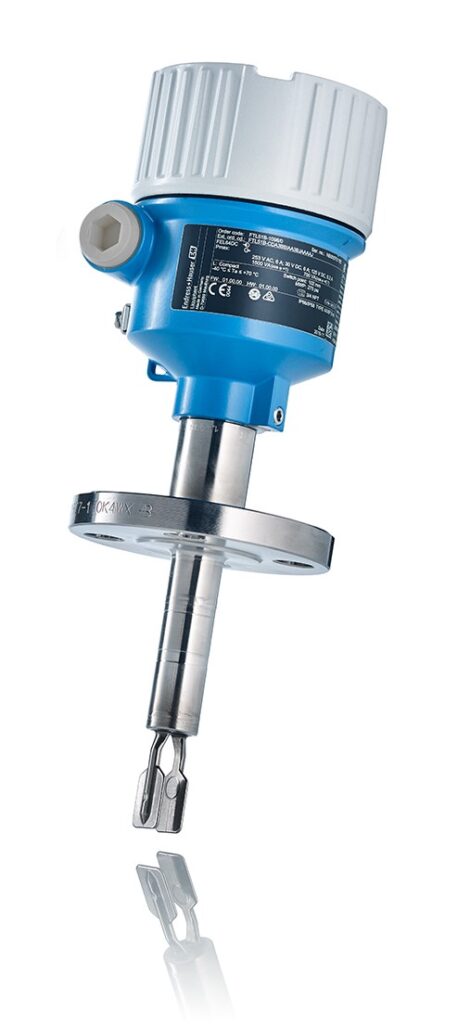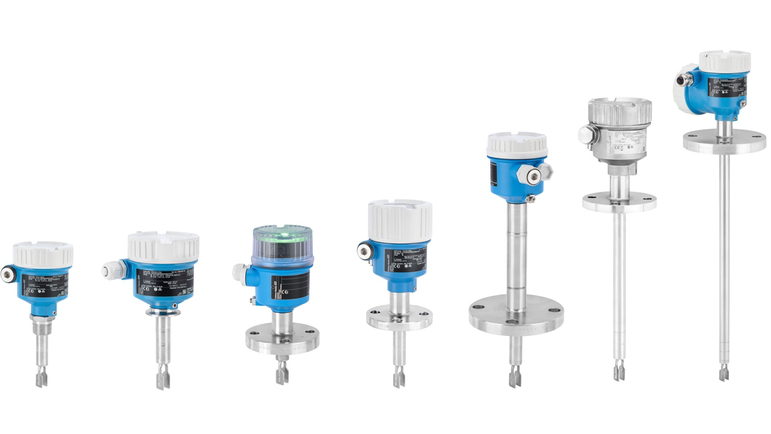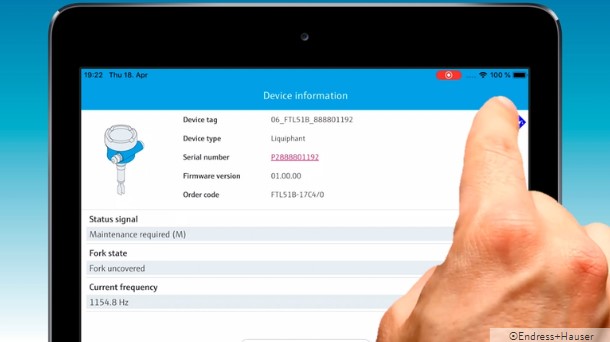Endress+Hauser highlights growing trends within the process automation industry
Discover the top 10 most viewed blogs of 2022 covering challenges and solutions across all industries May 9, 2023 – […]
How do you invent a product that optimizes plant processes in the long-term? And how do you take your product idea to the plant floor? With over 9,000 global instrument patents – this is something we’re passionate about at Endress+Hauser. Today we’ll go behind the scenes into the development and invention of the Liquiphant, Endress+Hauser’s vibronic point level switch technology, to show what it’s like to create a product in the process automation space.
There are two ways to invent something. The most common form of developing new products or product versions is simply consulting users. Where are solutions needed? What part of daily working life do we want to make easier? These product ideas cater to the customer. They are created based on real needs and provide customers with efficient help. Every measuring device manufacturer relies on this procedure for developing their product portfolio. Endress+Hauser is no exception and develops products with this method.
Then there is the other method: catching a vision for what is technically possible and testing whether users need and want the product. Interviewing users to find out what they want can only go so far. If they had conducted a user survey in the 1990s, none of us would have indicated that we needed to have online friends or that we would want to combine our mailbox, phone, calendar and computer into one device that we control with swiping movements. Before Facebook or the iPhone existed, if you had asked users whether they needed those things, the majority would probably have said they did not. Sometimes you need to see beyond the immediate need and imagine what is possible.

In the late 1970s, Georg H. Endress, the founder of Endress+Hauser, had a vision. His goal was to abandon the pitfalls of the capacitive measuring principle and develop an all-metal sensor that would be permanently leak-proof. He did not want to just optimize. He wanted to rethink for customers and deliver a completely new concept. A new measuring principle was born: vibronics for liquids.
The concept soon became a hit for Endress+Hauser. The Liquiphant vibronic point level detector, featuring a vibrating metal fork, is still known today as a reliable and durable switch. It works as a solution in practically any application without calibration to the media. There are currently more than six million Liquiphant units installed in plants around the world, doing their jobs reliably. The fourth generation of the product features Bluetooth, self-diagnostics and verification without removing the device and a test wizard.
Endress+Hauser has long been testing what is technically possible. What is different today, however, is that customers are incorporated into the process at an early stage and asked for their opinions. When Microsoft launched the HoloLens smart glasses featuring ‘mixed reality’, which is a feature that takes the reality we all see and superimposes text and images onto it, the developers and product managers saw its potential.
What if you used it to streamline commissioning, training sessions and maintenance? When the initial version of the newly developed VisionBlue application was being created, customer input was received very early on in the process and affected how the product was designed and what it would be used for. Customer input led to the decision to give VisionBlue users a display of a safe route through the Ex zone to the device, all within HoloLens. The virtual reality placed over the real image shows the user each individual step that they have to carry out to set up or maintain the measuring device.
There are currently so many technical possibilities on the horizon that developers are thinking several steps ahead. They are trying new things and getting customers involved in testing from the get-go. In addition to the major concepts the developers are working on for Industry 4.0 solutions and the digital twin, there are always small practical products that crop up along the way. One of their accomplishments is an adapter for field devices that allows data to be transferred from the field over WirelessHART or Bluetooth to the cloud for diagnostics or analysis. You’ve likely heard this referred to as IO-Link.
In addition to the major advancements in high-tech options, day-to-day work focuses on small-scale optimizations. For example, a certain level measuring device may need to handle future applications at temperatures as low as -52°C, or maybe there is a pressure measuring instrument in need of a high-pressure design. In these cases, marketing employees draft their requirements in the form of requirement specifications. The development department creates the design and, finally, translates it into technically feasible specifications.
Endress+Hauser has worked to provide large variety of product versions from day one. This has allowed the company to offer the best custom solution for each individual application. Endress+Hauser remains true to this principle today, and maintaining such a large portfolio means having to optimize the organization in order to manage everything, despite having so many employees working in development.

Research and Development achieves this by relying on new methods in product design: Eliyahu M. Goldratt invented the Theory of Constraints with a focus on the critical chain. Counterproductive multitasking is avoided. You select a few projects that you want to give priority to and have individuals focus on. Buffers are built into the schedule for safety, but they are shorter and placed at the very end. This way, those working on the project will not fall victim to ‘student syndrome’, otherwise known as procrastinating for as long as possible. The employees involved end up finishing more projects in the same time frame than they would using the conventional procedure.

This working method requires many people to change their way of thinking. Engineers are famous for their attention to detail and for their tendency to experiment and cram as many technical features as possible into one product. These days, however, there is a greater need for straightforward user guidance and reducing complexity. A lot has changed in development in this respect, too. A greater proportion of software developers these days are utilizing their eye for detail to create straightforward and intuitive operating concepts. The software developers work according to agile methods like Scrum, which means they develop in short sprints while testing, verifying and optimizing very quickly.
Measuring devices for safety-relevant SIL applications serve as an example of how putting effort into every detail pays off. Traditionally, plant operators buy measuring devices that are suitable for SIL applications and test them in the actual application —effectively as ‘proven in use’. The international standard IEC 61508 for functional safety and electronic safety-related systems allows measuring devices to comply with the standard as early as the development phase.
The developers design hardware and software in such a way that systematic errors are minimized. The hardware also requires a monitoring system for hardware faults and a calculation for the quantitative probability of failure. This allows users to buy ‘SIL straight from the factory’ along with the corresponding documentation, so that they can ensure transparent and traceable compliance.
What costs the developers considerably more in terms of development effort pays off later for the developers thanks to a significantly streamlined workflow, and for the end user allows faster and simpler implementation of SIL devices into their process.
For more information on SIL, take a look at our white paper, “Functional Safety in Practice”!
Discover the top 10 most viewed blogs of 2022 covering challenges and solutions across all industries May 9, 2023 – […]
Improve the working life of your legacy source by increasing the sensitivity of your detector It can be concerning when […]
The measurement of TOC (total organic carbon) in water is of vital importance to a multitude of industries that need […]